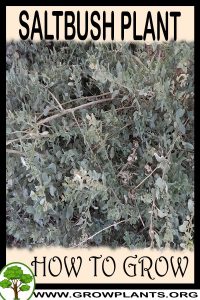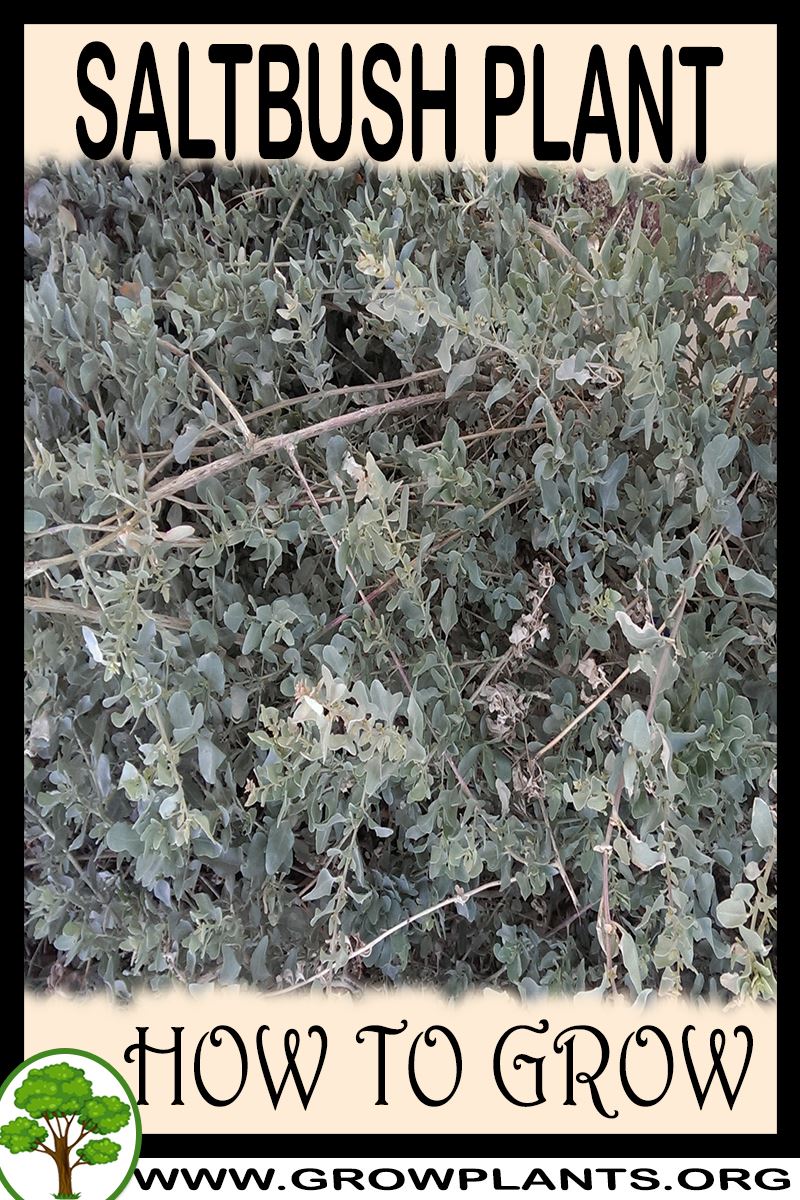
Saltbush grow and care – shrub of the genus Atriplex also known as Orache, Saltbush perennial evergreen plant, grown for the edible leaves also used as ornamental plant can be hedge plant, its drought tolerant and also for medical uses, can grow in mediterranean, desert, subtropical or temperate climate and growing in hardiness zone 4-11.
Saltbush leaves
Leaves edible in color green-gray or purple with ovate, elliptic or triangle shape, the leaf taste it’s salty, sometime next to the flower the leaves become purple.
Flower color can be: red, pink, purple or green the flowers grow in the end of the stems and the color of the leaves changed to purple.
Saltbush for sale – Seeds or Plants to Buy
No products found.
How to grow Saltbush – growing condition and care:
Frost free (can survive light frost), well-drained soil
What is the best way to start growing?
Plant / Seed / Vegetative Reproduction – Cutting possible to put in water and switch the water every few days or put the stem in soil better peat soil and better with root growth hormone, in both cutting methods better to do it in warm season, with high humidity
Is it necessary to graft or use vegetative reproduction?
No, but easy to grow from cutting
Difficulties or problems when growing:
Invasive
Planting season:
Spring in hardiness zone 4-6, spring to summer in hardiness zone 7-9, spring to autumn in hardiness zone 10a, all year in hardiness zone 10b-11
Pests and diseases:
?
Pruning season:
Better in the summer to prevent the plant bloom
How to prune:
Just for design and harvesting
Size of the plant?
1-3 m, 40-120 inches
Growth speed in optimal condition:
Medium growing
Water requirement:
Small amount of water
Light conditions in optimal condition for growing:
Full Sun / Half Shade / Full Shade (some varieties can grow in shade but need light and won’t bloom)
Is it possible to grow indoor as houseplant?
Yes, important a lot of light and it might affect the growth of the plant and surly it won’t bloom
Growing is also possible in a planter /flowerpot / containers:
Yes, in containers need to keep the plants small, start with pot that will be 50-90% more than the root ball, bigger the plant smaller the percentage, every time that the tree arrive to full capacity need to switch to bigger until arrives to desirable size, and when the plant big need to switch part of the soil and prune the roots and the leaves, better use this method because the soil lose the viability over time and it’s efficient of care for the plant, drainage it’s important and need to make holes, possible to use potting mix or peat soil and maybe some lava grit, another option to use sandy soil or mix of sandy soil with something with more nutrient, better not to use bottom for the container and when water the plant let it fill the bottom better to put them away.
Blooming information
Bloom season:
Winter to spring
General information about the flower:
Flower color red, pink, purple or green, the flowers grow in the end of the stems and the color of the leaves changed to purple.
Edible leaves
Leaves harvesting season:
All year
How to harvest the leaves?
After the plant establish can trip free
Information about leaves:
Salty leaves in ovate shape in gray-green or purple color
Uses of Saltbush leaves:
Pastry, eaten raw, cooked, dried, herb, spices, as salt
Scientific name:
Atriplex
Categories
| Blooming Seasons |
|
|---|---|
| Edible Parts |
|
| Culinary uses |
|
| Flower colors |
|
| Climate |
|
| Harvest Season |
|
| Leaf color |
|
| Ornamental parts |
|
| Plant growing speed |
|
| Plant life-form |
|
| Plant Uses |
|
| Planting Season |
|
| Plants sun exposure |
|
| Watering plants |
|
| Hardiness zone |
|

